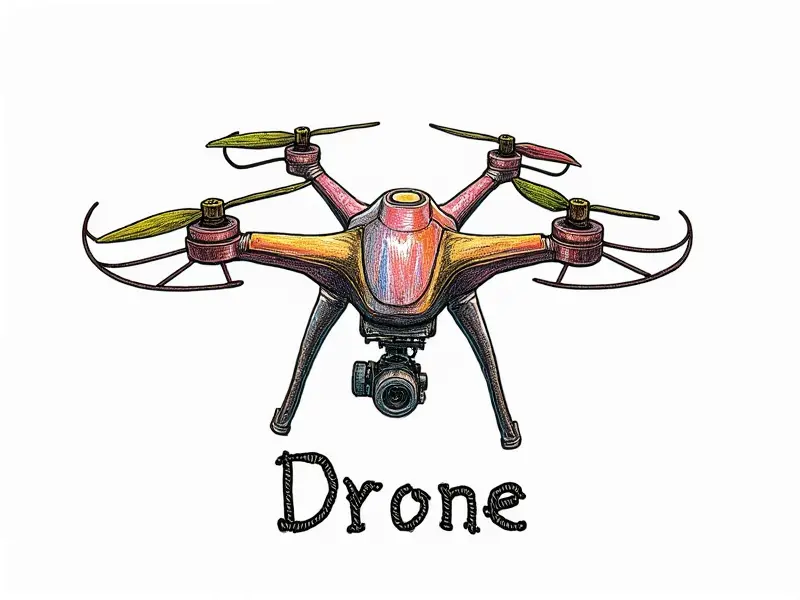Drone maintenance tips?

Top Drone Maintenance Tips for Longevity
Maintaining your drone is crucial to ensure it operates at peak performance and lasts longer. Regular upkeep can prevent costly repairs, extend battery life, and improve flight stability. Here are some essential tips every drone pilot should follow:
Essential Care for Your RC Quadcopter
- Inspect Propellers: Before each flight, check propellers for cracks or damage.
- Battery Management: Charge batteries to the recommended voltage and avoid overcharging.
- Frame Inspection: Look for any signs of wear or impact on the frame.
- Clean Components: Use compressed air to remove dust from motors, ESCs (Electronic Speed Controllers), and other components.
Keeping Your FPV Racing Drone in Shape
FPV racing drones operate at high speeds and endure intense conditions. Here’s how to keep them flying:
- Stress Points: Inspect frame joints for any signs of stress or damage.
- Cable Management: Ensure all cables are securely routed and protected from abrasion.
- Camera Stability: Use a camera gimbal to stabilize the video feed during high-speed maneuvers.
Simple Steps to Maintain RC Helicopters
RC helicopters require meticulous care due to their complex mechanisms. Follow these steps for optimal maintenance:
- Maintain Tail Rotor: Keep the tail rotor and drive shaft well-lubricated.
- Check Gyroscopes: Ensure gyroscopes are properly aligned and functioning correctly.
- Battery Capacity: Monitor battery voltage levels to prevent over-discharge.
How to Extend the Life of RC Airplanes
RC airplanes can last a long time with proper care. Here’s how to keep them in top condition:
- Clean Wings: Remove dirt and debris from wing surfaces regularly.
- Battery Health: Use high-quality batteries and monitor their performance over time.
- Structural Integrity: Inspect the fuselage for any signs of wear or damage.
Battery Care for Optimal Drone Performance
Batteries are a critical component in drone operation. Proper care can extend their lifespan and maintain performance:
- Storage Conditions: Store batteries at room temperature, away from direct sunlight.
- SOC (State of Charge): Maintain optimal charge levels to prevent over-discharge or overcharging.
- Battery Balance: Use a battery balancer to ensure all cells are evenly charged.
Preventive Maintenance for Drones Explained
Scheduled maintenance can help identify potential issues before they become critical. Here’s what you should do:
- Daily Checks: Inspect the drone after each flight for any signs of damage.
- Monthly Maintenance: Clean and lubricate moving parts, check battery health.
- Semi-Annual Overhaul: Disassemble the drone to inspect internal components thoroughly.
Tips for Cleaning and Lubricating Drones
Cleaning and lubrication are essential to prevent wear and tear. Here’s how to do it right:
- Dust Removal: Use compressed air or a soft brush to remove dust from motors, ESCs, and other components.
- Lubricate Joints: Apply light lubricant to moving parts like propellers and landing gears.
- Clean Electronics: Wipe down electronic components with a lint-free cloth dampened in isopropyl alcohol.
Quick Fixes for Common Drone Issues
Sometimes minor issues can be resolved quickly to get you back in the air. Here are some common fixes:
- Battery Not Charging: Check charging port and connections, replace if necessary.
- Propeller Vibrations: Balance propellers using a prop balancer tool.
- Signal Interference: Move away from electronic devices causing interference or use an antenna extender.
Keep Your Drone Flying: Maintenance Basics
Maintaining your drone is essential for its longevity and performance. Here are some fundamental maintenance practices to follow:
- Regular Inspections: Conduct thorough inspections before each flight.
- Component Replacement: Replace worn or damaged parts immediately.
- Follow Manufacturer Guidelines: Adhere to the manufacturer’s maintenance recommendations.
DIY Drone Repairs Every Pilot Should Know
Sometimes, minor repairs can be done at home with basic tools and knowledge. Here are some DIY repair tips:
- Replacing Propellers: Use a propeller removal tool to safely replace damaged blades.
- Lubricating Motors: Apply a small amount of lithium grease to motor shafts for smooth operation.
- Battery Testing: Test batteries with a battery analyzer to ensure they are functioning correctly.
Conclusion
Maintaining your drone is crucial not only for safety but also for maximizing its lifespan and performance. By following these maintenance tips, you can enjoy flying your drone without worrying about unexpected breakdowns or reduced flight time. Regular care and attention to detail will keep your drone in top condition, ensuring many more hours of enjoyable flights.

